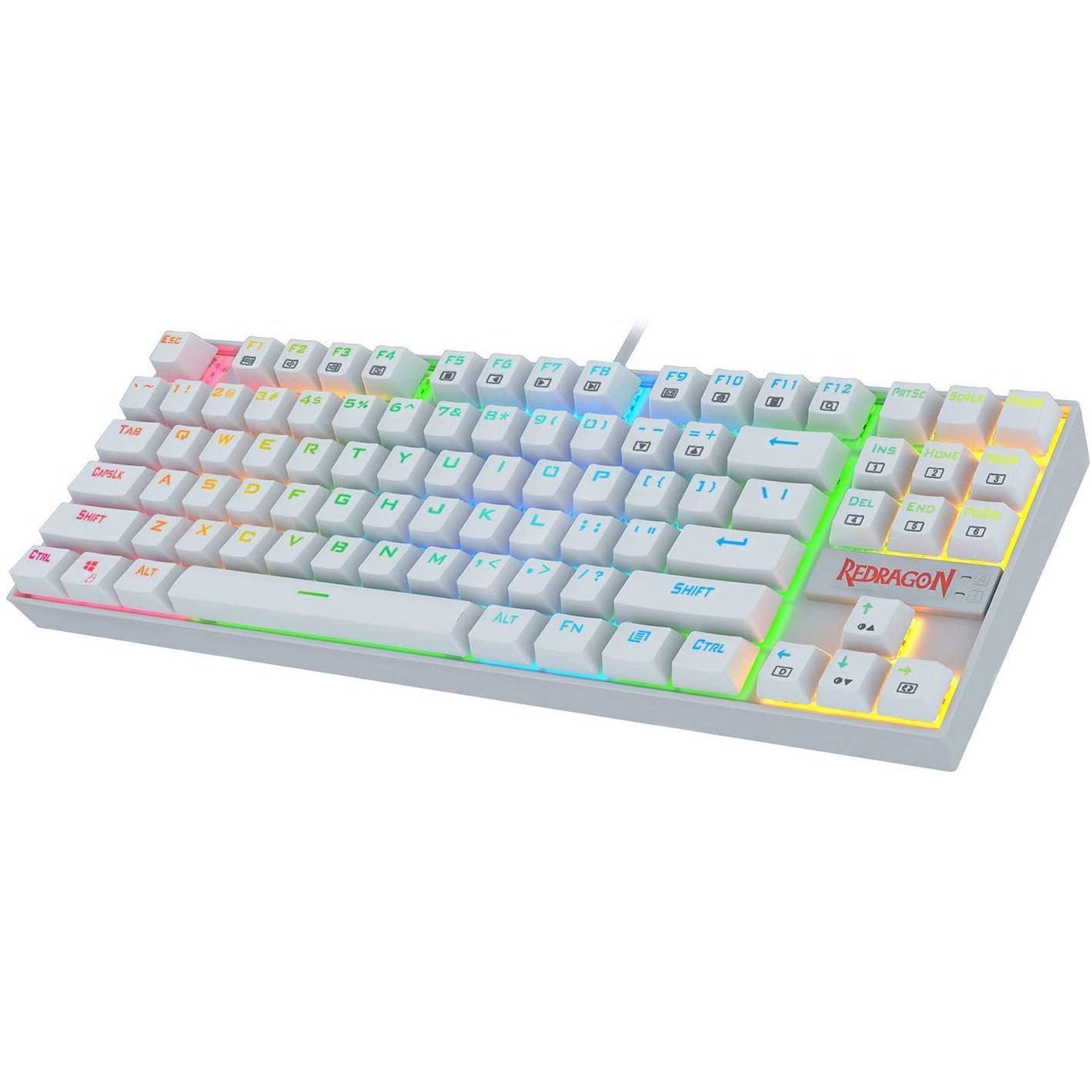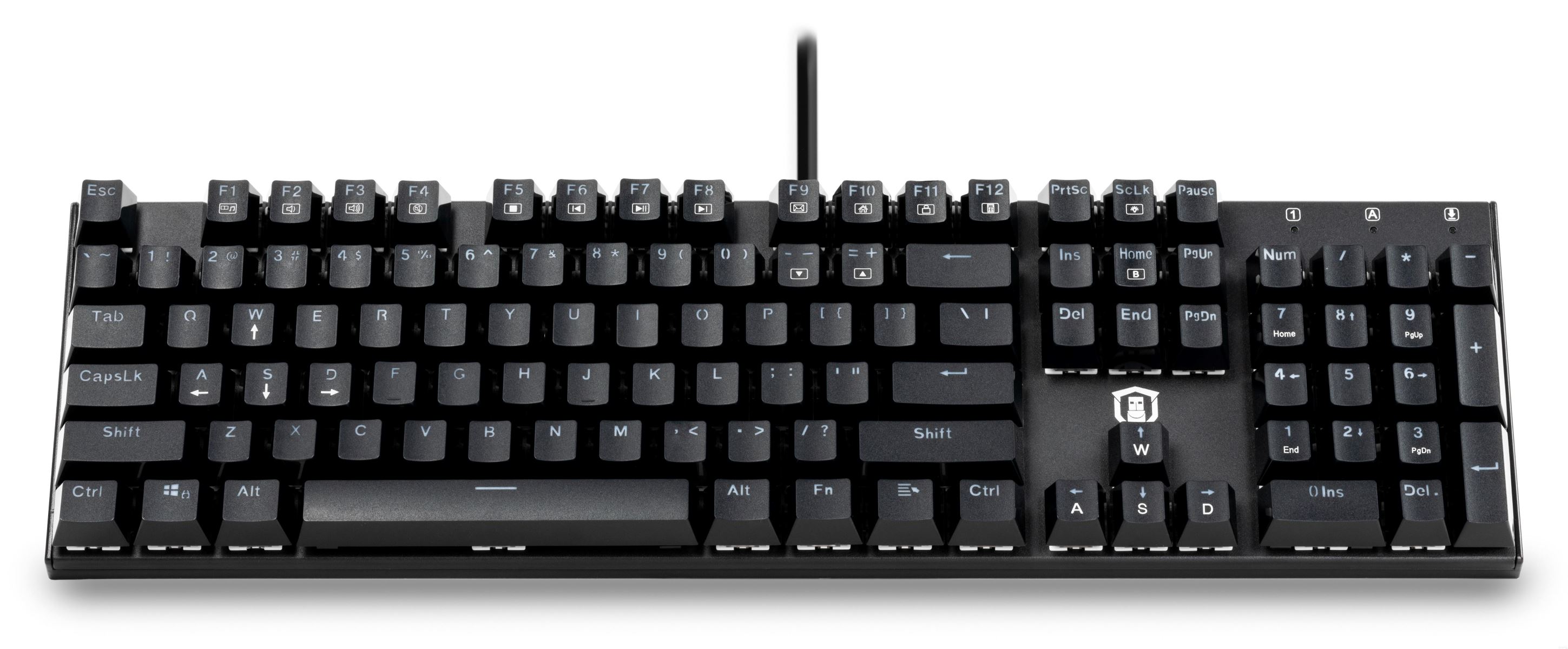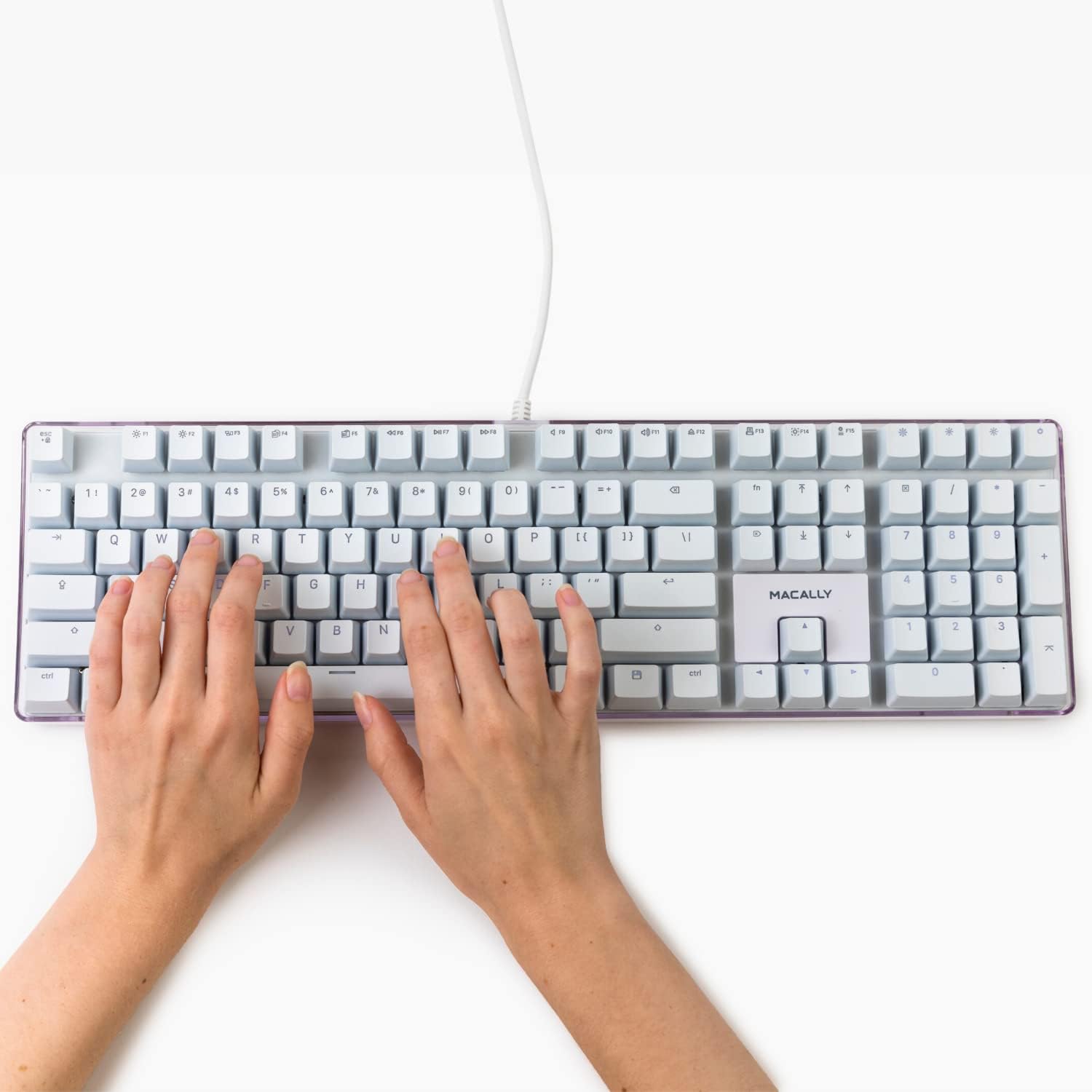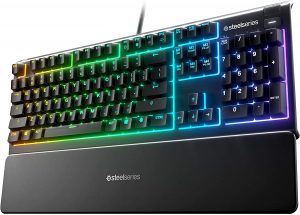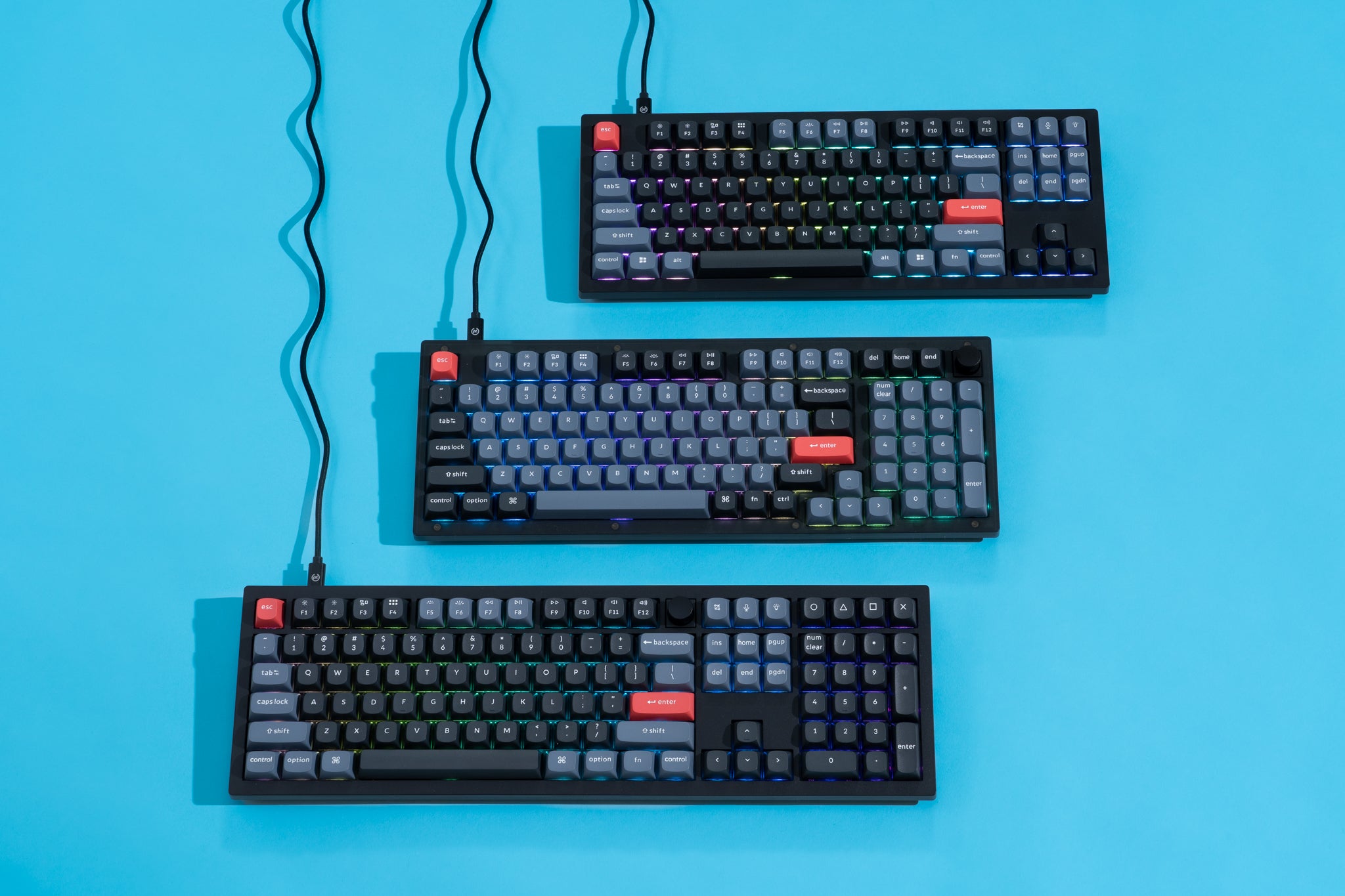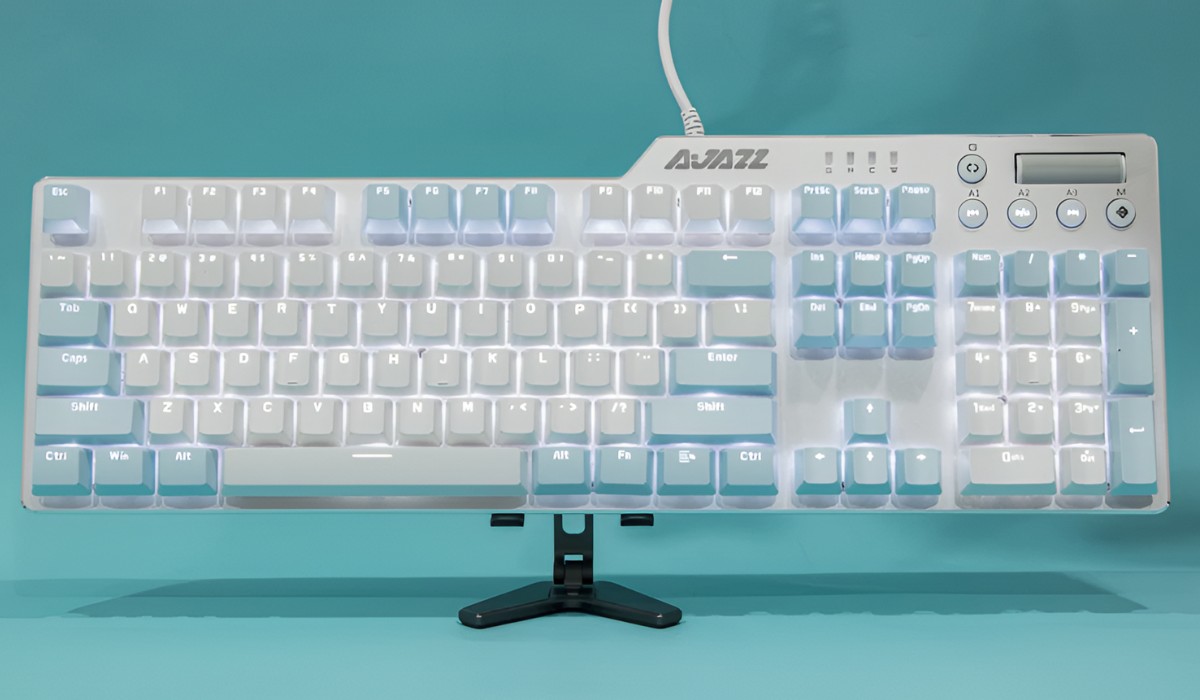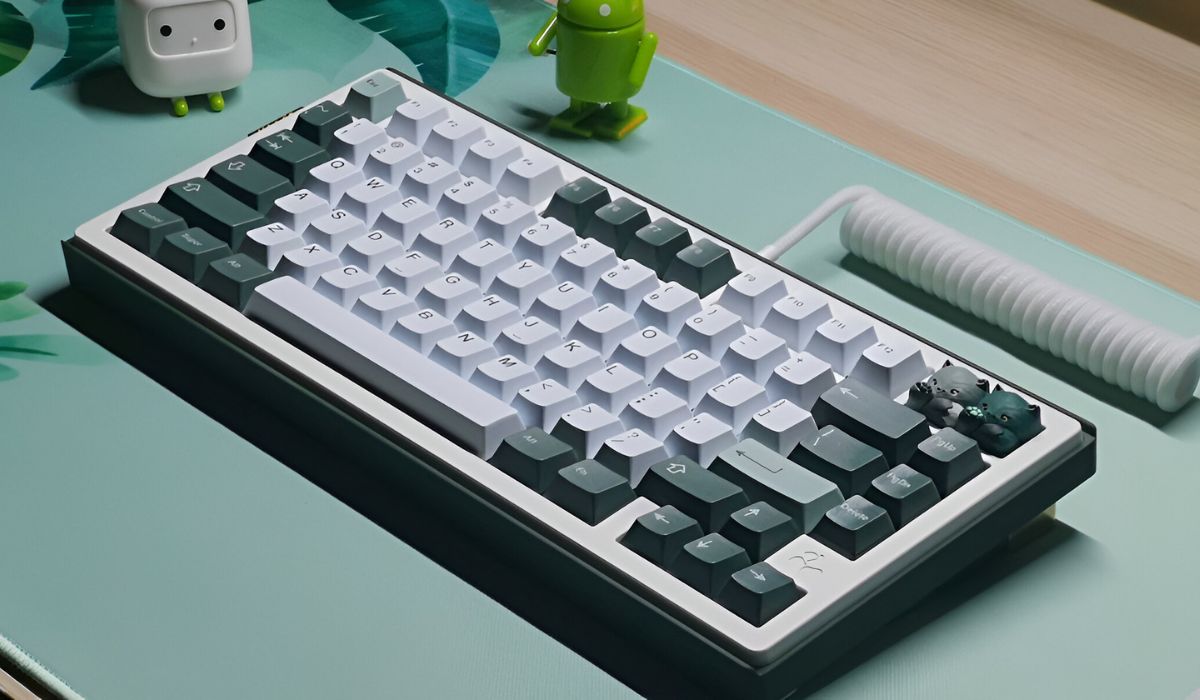Introduction
When it comes to typing, gaming, or simply navigating a computer, the keyboard is an indispensable tool. For many enthusiasts, a full-size mechanical keyboard is the preferred choice due to its tactile feedback, durability, and customizable features. One common question that often arises among users and potential buyers is, "How many keys are there on a full-size mechanical keyboard?" This query is not only about the sheer number of keys but also about understanding the layout and functionality of these keys.
In this article, we will delve into the anatomy of a full-size mechanical keyboard, exploring the standard layout, additional keys, and the total number of keys. By gaining insight into these aspects, users can develop a deeper appreciation for the intricate design and functionality of these input devices.
Whether you are a seasoned user seeking to expand your knowledge or a newcomer exploring the world of mechanical keyboards, understanding the composition of these devices is essential. Let's embark on a journey to uncover the mysteries behind the keys of a full-size mechanical keyboard and gain a comprehensive understanding of their significance.
Standard Layout
The standard layout of a full-size mechanical keyboard is a crucial aspect that defines its usability and familiarity for users. This layout typically adheres to the traditional 104-key configuration, which includes the main alphanumeric keys, function keys, navigation cluster, and a dedicated number pad. The alphanumeric section consists of the familiar QWERTY layout, along with modifier keys such as Shift, Control, and Alt, which are essential for executing various commands and shortcuts.
Furthermore, the function keys, located at the top row of the keyboard, provide quick access to system functions, media controls, and other programmable shortcuts, enhancing the overall user experience. The navigation cluster, comprising the arrow keys and additional navigation and editing keys, facilitates seamless cursor movement and text manipulation, making it indispensable for productivity tasks and gaming alike.
Notably, the presence of a dedicated number pad on the right side of the keyboard contributes to efficient data entry, calculations, and spreadsheet operations, catering to the needs of professionals in fields such as accounting, finance, and data analysis. This standardized layout ensures that users can transition seamlessly between different full-size mechanical keyboards, promoting a consistent and intuitive typing experience across various devices.
Understanding the standard layout of a full-size mechanical keyboard is essential for users who rely on these input devices for daily tasks, gaming, or professional work. The familiarity and ergonomic design of the standard 104-key layout play a pivotal role in shaping the user’s interaction with the keyboard, ultimately contributing to enhanced efficiency and comfort during prolonged usage.
Additional Keys
Beyond the standard layout, full-size mechanical keyboards often feature a range of additional keys that serve specific functions, catering to diverse user needs and preferences. These supplementary keys contribute to the versatility and customizability of the keyboard, enhancing its utility for various tasks and applications.
One prominent set of additional keys is the multimedia controls, which offer convenient access to volume adjustment, media playback, and other audio-related functions. These dedicated keys, often located at the top or sides of the keyboard, enable users to manage audio output without interrupting their primary activities, whether it’s typing, gaming, or multimedia consumption.
Moreover, full-size mechanical keyboards may incorporate programmable macro keys, which empower users to assign complex sequences of commands or macros to specific keys, streamlining repetitive tasks and enhancing productivity in gaming and professional environments. The ability to customize these keys according to individual preferences provides a significant advantage, allowing for tailored shortcuts and efficient workflow optimization.
Furthermore, some mechanical keyboards offer additional keys for lighting controls, enabling users to adjust the RGB backlighting, brightness levels, and lighting effects to create a personalized aesthetic and improve visibility in low-light environments. This feature adds a layer of customization and ambience to the keyboard, enhancing the overall user experience and aesthetic appeal.
Additionally, certain full-size mechanical keyboards may integrate dedicated keys for system functions, such as sleep mode, calculator, and shortcut keys for launching specific applications or utilities. These keys contribute to seamless navigation and accessibility, empowering users to perform tasks with ease and efficiency.
By incorporating these additional keys, full-size mechanical keyboards transcend conventional input devices, offering enhanced functionality and personalization options that cater to the diverse needs and preferences of users across various domains.
Total Number of Keys
When tallying the total number of keys on a full-size mechanical keyboard, it’s essential to consider the comprehensive array of keys that contribute to the device’s functionality and versatility. The standard 104-key layout forms the foundation, encompassing the alphanumeric keys, function keys, navigation cluster, and the dedicated number pad. However, the total count extends beyond these primary keys, encompassing additional and specialized keys that augment the keyboard’s capabilities.
Expanding upon the standard layout, full-size mechanical keyboards often integrate multimedia controls, macro keys, lighting controls, and dedicated system function keys, effectively increasing the total number of keys. The inclusion of multimedia controls for volume adjustment, media playback, and audio management, along with programmable macro keys for customized shortcuts, amplifies the keyboard’s utility and user customization options.
Moreover, the incorporation of lighting controls and dedicated system function keys further contributes to the overall key count, enriching the keyboard’s feature set and user experience. These additional keys not only expand the functionality of the keyboard but also reflect the evolving demands of users, catering to diverse preferences and usage scenarios.
Considering these factors, the total number of keys on a full-size mechanical keyboard typically exceeds the standard 104-key layout, varying based on the specific model and its supplementary features. While the core layout remains consistent, the inclusion of extra keys enhances the keyboard’s adaptability for tasks ranging from typing and gaming to multimedia editing and productivity applications.
Ultimately, the total number of keys on a full-size mechanical keyboard encompasses the foundational layout and the ensemble of supplementary keys, collectively contributing to an expansive and multifaceted input device that meets the demands of modern users across a spectrum of activities and preferences.
Conclusion
Exploring the intricacies of a full-size mechanical keyboard unveils a world of functionality, versatility, and user-centric design. From the standard 104-key layout to the array of additional keys, these input devices embody a harmonious blend of tradition and innovation, catering to the diverse needs and preferences of users across various domains.
The standard layout, characterized by the alphanumeric keys, function keys, navigation cluster, and dedicated number pad, forms the cornerstone of the full-size mechanical keyboard, delivering a familiar and ergonomic typing experience. This standardized configuration ensures consistency and ease of use, empowering users to transition seamlessly between different keyboards while maintaining a consistent workflow.
Beyond the standard layout, the incorporation of additional keys such as multimedia controls, macro keys, lighting controls, and dedicated system function keys elevates the keyboard’s utility and customizability, catering to the evolving demands of users in the digital age. These supplementary keys expand the horizons of functionality, enabling users to personalize their experience, streamline tasks, and enhance productivity across diverse applications.
When considering the total number of keys on a full-size mechanical keyboard, it becomes evident that the traditional 104-key layout serves as a foundation upon which a myriad of specialized keys are integrated, enriching the keyboard’s feature set and adaptability. This comprehensive ensemble of keys reflects the keyboard’s evolution from a mere input device to a multifaceted tool that accommodates the multifaceted needs of modern users.
In essence, the keys on a full-size mechanical keyboard transcend their physical form, embodying a realm of possibilities and tailored experiences for users engaged in typing, gaming, content creation, and beyond. Understanding the composition and significance of these keys empowers users to harness the full potential of their keyboards, fostering efficiency, creativity, and seamless interaction with the digital realm.
As users continue to embrace the unparalleled tactile feedback, durability, and customization options offered by full-size mechanical keyboards, the journey of discovery and innovation in keyboard design and functionality remains an ever-evolving adventure, promising new experiences and possibilities on the horizon.









